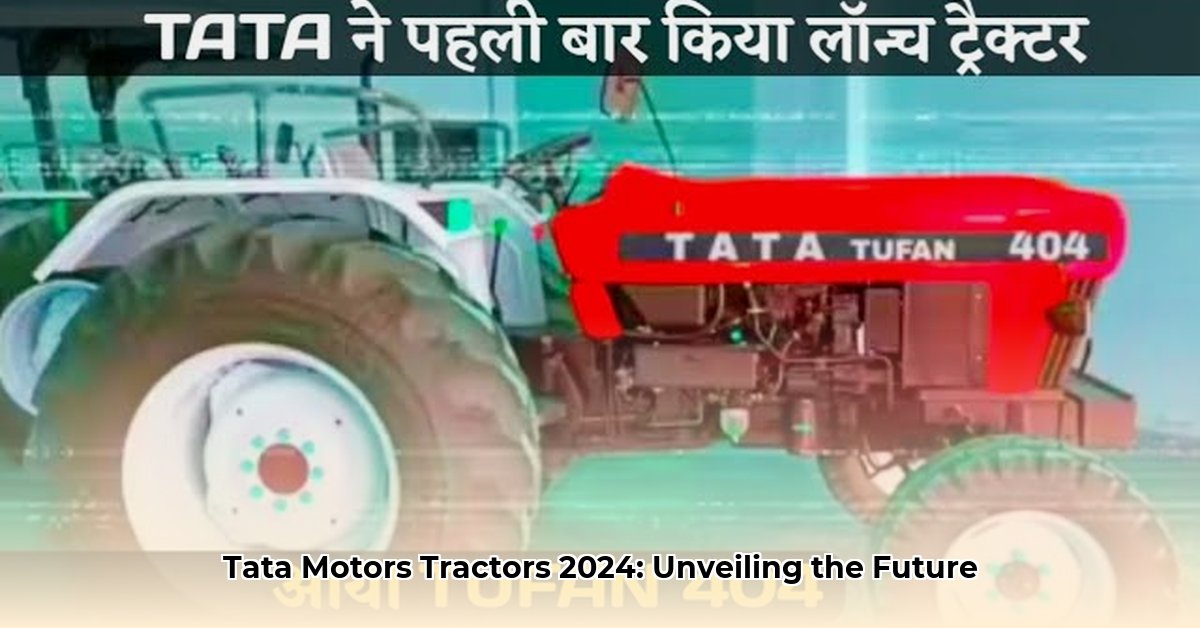
Tata Motors Tractors: A 2024 Model Overview and Market Positioning Analysis
Choosing the right tractor is a crucial decision for farmers and businesses alike. Tata Motors, a significant player in the Indian tractor market, offers a diverse range of models. This article provides an overview of key Tata tractor models, comparing their specifications and highlighting their potential market positioning. We acknowledge upfront that a comprehensive competitive analysis is hampered by the limited availability of sales and market share data. This analysis focuses on available information and emphasizes the need for further research. For financing options, check out this tractor finance calculator.
Key Tata Tractor Models: Specifications and Features
The following table summarizes key specifications for selected Tata tractor models. Note that pricing is an estimate and may vary depending on location and dealer.
| Model | Horsepower | Gross Vehicle Weight (kg) | Notable Features | Estimated Price Range (INR) |
|---|---|---|---|---|
| Tata Nexa | 45 | 2500 | Powerful engine, smooth transmission, easy handling | 600,000 - 750,000 |
| Tata 475 DI | 47 | 2800 | Durable build, fuel-efficient engine, reliable performance | 700,000 - 850,000 |
| Tata 60 DI | 60 | 3200 | High power output, ideal for larger farms, advanced features | 900,000 - 1,100,000 |
| Tata Harvester | 50 | 2750 | Versatile design, suitable for diverse tasks, comfortable operation | 750,000 - 950,000 |
| Tata 72 DI | 72 | 3500 | Strong engine, heavy-duty construction, excellent for heavy-duty tasks | 1,000,000 - 1,300,000 |
While this table facilitates a preliminary comparison within the Tata range, a complete competitive analysis requires broader market data. How do these models stack up against competitors like Mahindra and John Deere in terms of sales and market share? This remains an open question.
The Indian Tractor Market: Context and Challenges
India's tractor market is substantial and highly competitive. Its size and growth trajectory are influenced by numerous factors, including agricultural output, government policies (such as farm subsidies and import regulations), fuel prices, and technological advancements in farming practices. Analyzing Tata Motors' position requires a deeper understanding of these market dynamics. Further research is needed to accurately assess Tata’s market share and its response to these external influences. How significant is the impact of government subsidies on tractor sales?
Tata Motors Tractors: Future Outlook and Strategic Considerations
Tata Motors' future success in the Indian tractor market depends on several key factors. Investments in research and development (R&D) are crucial. Features like automation, enhanced fuel efficiency, and integration with smart farming technologies will likely play a significant role in driving future competitiveness. Strategic partnerships and expansions into new market segments could further boost their market presence. However, maintaining a competitive edge in this crowded market will require continuous innovation and a proactive approach to evolving industry trends. Can Tata leverage its existing brand recognition to gain a larger segment of the market?
Conclusion: The Need for Comprehensive Data
This analysis offers a partial overview of Tata Motors' tractor offerings. However, a truly thorough assessment necessitates more comprehensive data. The lack of detailed sales data and market share figures prevents a robust competitive comparison with key players like Mahindra and John Deere. Further research is essential to accurately assess Tata's market position and predict its future trajectory. This includes gathering data on: sales figures, precise market share, and detailed technical specifications of competitor models. Only with a more complete data set can we fully evaluate Tata’s success and competitiveness in this important market.
How to Compare Tata Tractor Models Against Mahindra and John Deere: A Data-Driven Approach
Key Takeaways:
- Tata offers a range of tractors suited to diverse farming needs; however, direct comparison with Mahindra and John Deere requires complete sales and market share data.
- Internal analysis shows strengths and weaknesses of various Tata models based on horsepower and intended use.
- The vast Indian tractor market is subject to various economic and policy influences.
- Tata's future success hinges on R&D, technological innovation, and strategic market expansion.
- Comprehensive market data is essential for a complete competitive assessment.